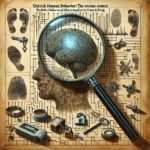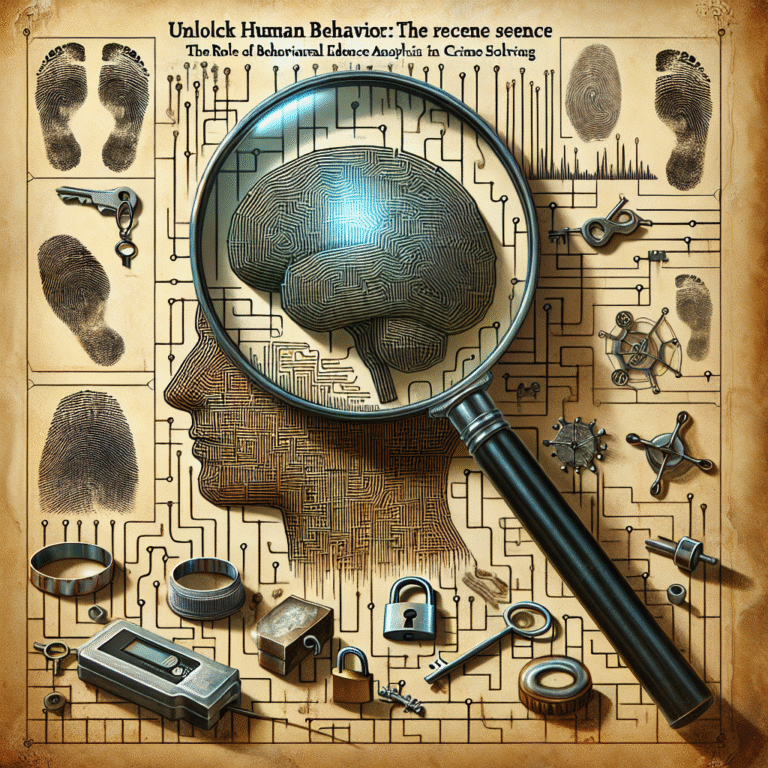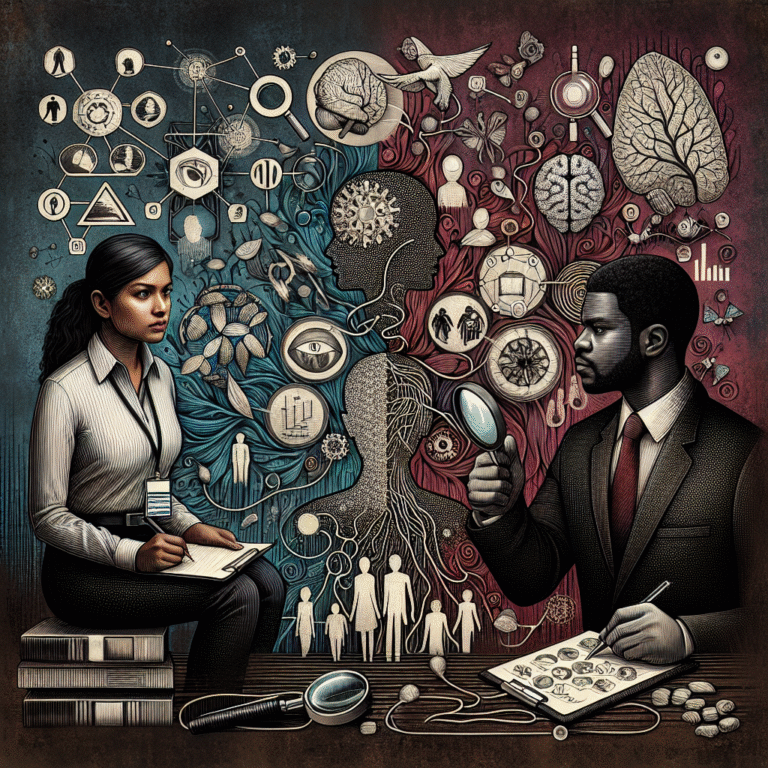
Introduction
Imagine a courtroom where decisions are not solely dependent on witness testimonies or expert opinions, but also on compelling evidence from brain scans. This isn’t a scene from a futuristic sci-fi movie, but a burgeoning reality in today’s judicial system. "From Brain Scans to Verdicts: Exploring the Intersection of Neuroscience and Law" delves deep into this fascinating interplay between neuroscience and law. As courts increasingly integrate scientific findings into legal reasoning, the implications for justice, policy, and ethics become profound.
Neuroscience offers insights into human behavior and decision-making, which can radically transform how the legal system addresses crime, punishment, and rehabilitation. This article will explore this intricate relationship, examining real-world case studies, the ethical challenges involved, and the potential for reshaping legal frameworks.
The Foundation: What Is Neuroscience?
Neuroscience is the scientific study of the nervous system, which includes the brain, spinal cord, and networks of neurons throughout the body. It seeks to understand how these biological structures give rise to behavior, cognition, emotion, and ultimately, the decision-making processes that underlie criminal actions. As researchers unveil the intricacies of the human brain, the implications for legal accountability become increasingly significant.
The Role of Brain Imaging
One of the essential tools emerging from neuroscience is brain imaging technology. Functional Magnetic Resonance Imaging (fMRI), Positron Emission Tomography (PET), and Electroencephalography (EEG) allow researchers and clinicians to visualize brain activity in real-time. These technologies have revealed that certain patterns of brain activity correspond with impulsive behavior, emotional regulation, and moral judgment—critical factors when determining criminal responsibility.
Key Terminologies in Neuroscience and Law
- Neuroethics: The study of how advances in neuroscience affect ethical considerations in society.
- Neurolaw: The intersection of neuroscience and legal concepts, particularly regarding liability and mental capacity.
Case Studies: Neuroscience in Action
Exploring real-world case studies enhances our understanding of neuroscience’s role in the legal system. Here are some pivotal examples.
Case Study 1: The Brain Scan Defense
In the notable case of Miller v. Alabama, the U.S. Supreme Court deliberated whether mandatory life sentences without parole constituted cruel and unusual punishment for juvenile offenders. Neuroscientific evidence presented in court demonstrated that adolescents are particularly prone to impulsive decisions due to ongoing brain development. This information significantly influenced the decision, emphasizing that understanding brain function can impact legal outcomes.
Analysis
Here, neuroscience played a crucial role in shaping policy—underscoring the necessity for the legal system to consider developmental factors in sentencing. The ruling bore implications for how juveniles are perceived and treated within the justice system.
Case Study 2: The Insanity Defense
The case of John W. Hinckley Jr., who attempted to assassinate President Reagan, brought neuroscience into the arena of the insanity defense. During the trial, brain scans revealed anomalies consistent with mental illness, ultimately leading to a verdict of not guilty by reason of insanity.
Analysis
This case highlights the complex interplay between mental illness and criminal responsibility. Neuroscience provided tangible evidence that helped establish Hinckley’s state of mind during the crime, demonstrating the potential for brain imaging to influence verdicts in significant ways.
Ethical Considerations in Neuroscience and Law
The integration of neuroscience into legal proceedings raises numerous ethical questions. Addressing these concerns is crucial for ensuring that neuroscience positively impacts the justice system.
Informed Consent and Privacy
As brain scans become more prevalent in legal contexts, issues of informed consent and access to sensitive information arise. Should defendants have the right to refuse a brain scan? Furthermore, how is the data from these scans safeguarded to prevent misuse?
The Risk of Determinism
One of the foremost worries is the deterministic view of behavior that can arise from neuroscientific findings. If certain brain patterns are linked to criminal behavior, how do we navigate the fine line between understanding behavior and absolving individuals of responsibility? This tension requires careful consideration to avoid unjust implications.
The Future of Neuroscience in Legal Contexts
As we move further into a scientifically informed legal landscape, the future of neuroscience and law presents exciting possibilities.
Potential for Rehabilitation
Understanding the neurological basis of behavior could revolutionize rehabilitation approaches. If specific brain patterns are identified in habitual offenders, targeted interventions could be designed to address underlying issues—like addiction or impulse control—thereby contributing to public safety and reducing recidivism.
Policy Implications
Policymakers could use insights from neuroscience to craft laws that are more in tune with human behavior rather than punitive. For instance, incorporating neuroscience into sentencing guidelines may lead to more customized and effective rehabilitation strategies.
Educational Programs
Implementing educational programs for legal professionals will be essential. Lawyers, judges, and law enforcement should be trained in the basics of neuroscience to understand its implications effectively. Enhancing legal literacy regarding brain science can bolster informed decisions in courts and contribute to fairer outcomes.
Conclusion
"From Brain Scans to Verdicts: Exploring the Intersection of Neuroscience and Law" illuminates a transformative dialogue between two fields that, at first glance, may seem worlds apart. However, as we have explored, the convergence of neuroscience and law has the potential to reshape our understanding of human behavior, legal accountability, and rehabilitative justice.
While the future holds promise, it also entails a cautious approach to the ethical dilemmas that emerge. As we venture further into this uncharted territory, obtaining a balance between scientific insights and legal principles will be paramount. Ultimately, fostering collaboration between neuroscientists and legal experts will pave the way for a justice system that is not only informed by science but is also nuanced, compassionate, and effective.
FAQs
What is neurolaw?
Neurolaw refers to the intersection of neuroscience and legal principles. It examines how insights from brain studies can influence legal understanding of behavior, responsibility, and punishment.How are brain scans used in legal cases?
Brain scans can provide evidence related to a defendant’s mental state at the time of an offense, aiding in decisions about criminal responsibility, sentencing, and rehabilitation.Are there ethical concerns with using neuroscience in court?
Yes, ethical concerns include issues of informed consent, privacy, and the potential for deterministic interpretations of behavior that may absolve individuals from responsibility.What are the implications of brain imaging on juvenile justice?
Neuroscientific findings demonstrate that adolescents’ brains are still developing, which may influence sentencing and rehabilitation efforts tailored specifically for younger offenders.- Can neuroscience help prevent crime?
Insights from neuroscience can lead to better understanding and interventions for impulsive or aggressive behaviors, potentially reducing the likelihood of criminal activities.
As research continues to burgeon in this field, staying informed and engaged will be vital for all stakeholders involved—from legal professionals to the general public—ensuring that justice remains both informed and humane.















